What makes the “so bad it’s good” genre great is that it invites the audience to formulate their own opinions of movies by way of taking a movie and re-making it in their own imagination. These films, often so all over the place to practically avoid the definition of “actual cinema”, manage to create a new and chaotic movie genre, where all receptions, positive, negative, mocking, and intellectual curiosity are all on the table.
This is a hybrid list of my personal favorites and an examination of what creates a positive reaction to an initial cursory analysis. See ten examples below, spanning more than 50 years of movies, that failed with the best intentions.
Here is how low Rotten Tomatoes scores can be turned into fresh tomatoes of cinema glory with a little imagination.
10. Glen Or Glenda (1953)
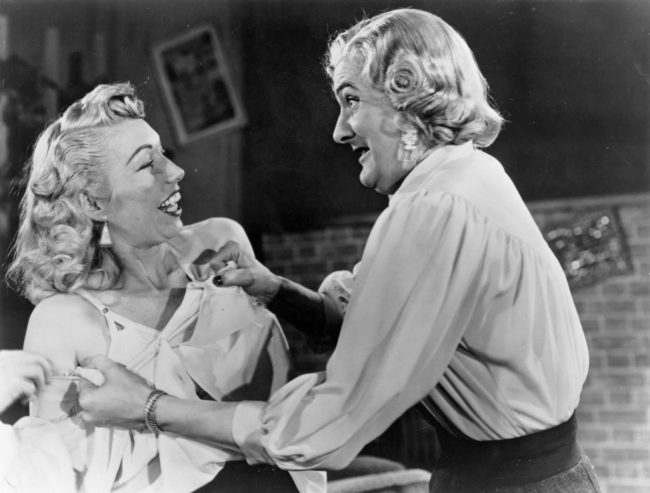
Plot: A psychologist relates the story of a transvestite named Glen (actor/director Ed Wood, Jr.) who is stressed about telling his girlfriend about his true self.
Why It’s Bad: Ed Wood has a very distinct way of making films that aren’t great. For one, he likes to write rambling dialogue that communicates something simple in three times the length, and often in a forced, clunky way. Bela Lugosi gives a very forceful speech about “pulling the string!”, but it only sort of makes sense in context.
And despite the short run time (about an hour), Ed feels the need to stretch the film. There are long passages with Glen in distress, but they don’t make a lot of sense, including the infamous random example of using stock footage of buffaloes running around.
Why It Is In Fact Good: I don’t think the movie knows how it gets there, but it’s actually an empowering tale. Glen gets the acceptance he wanted from his girlfriend (played by his real life lady friend Dolores Fuller, which reinforces the real positivity of the message). It’s a very “2016” story, where someone overcomes their obstacles and gains acceptance. Even the psychologist character is ahead of the then accepted stance on gender identity of the real 1950s that Ed Wood worked in. For all its nonsensicality, the randomness works in its favor, and the weirdness can keep your attention sometimes.
9. Troll (1986)
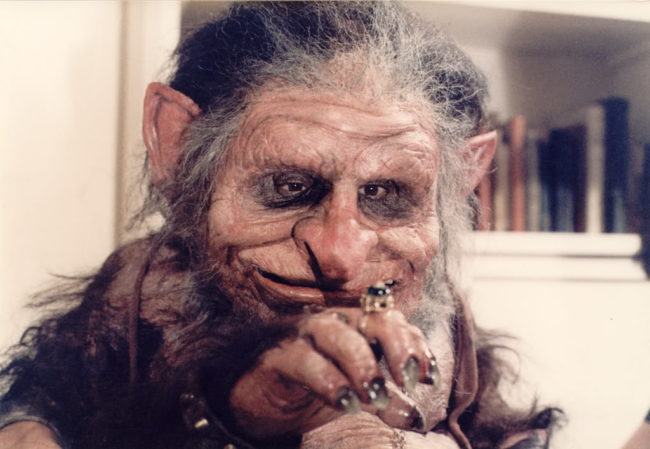
Plot: A – you guessed it – troll decides to take over an apartment complex as a way of establishing his power in this world.
Why It’s Bad: Troll will always be bad by association, as the producers of Troll 2 (1990), an unrelated movie about killer goblins and one of the most famous bad/good movies ever, exists only as a convoluted attempt to make money off of the original’s name. When Julia Louis-Dreyfus hosted Saturday Night Live earlier this past season, she played a clip of this movie as a tongue-in-cheek example of her success in movies, with the joke being how goofy stupid it is. And it is kind of goofy, and kind of cheaply put together. The effects on the Troll creature are ugly. The use of the little girl as the possessed villain, and her whiny brother as the only one who knows she’s changed, really put undue strain on their lack of acting ability. Plus the “plot” of the troll turning the apartment building’s tenants into woodland creatures is more episodic special effects than a real story.
Why It Is In Fact Good: While it’s not a traditional structure at times, the effects of celebrities becoming woodland inhabitants and the unique nature of this troll trying to turn the building into a forest thing captures the imagination, even it is sort of cobbled together. And there’s actually some good acting in here. Michael Moriarty and Shelley Hack are underutilized as the well intentioned parents, but their earnest performances make it believable where it doesn’t want to be. Even Julia Louis-Dreyfus (as well as her real life husband Brad Hall and Sonny Bono) give a little bit of likability to the insane events going on.
8. Hobgoblins (1988)
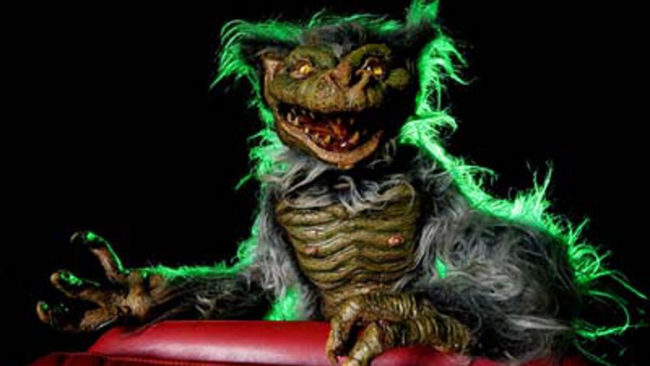
Plot: A young security guard discovers Gremlins (1984) knockoff creatures that make people’s fantasies come true, but also kills them. You had me at makes people’s fantasies come true!
Why It’s Bad: It’s kind of a horror movie, but the kills of these hobgoblins sort of ramble on – it’s not clear how they kill people. And the “fantasies” are really undercooked, like something from a kid’s cartoon show (“I guess this guy wanted to be a rock star, so he’s on stage and falls off the stage or something…”). Plus, like a milder Ed Wood, writer/director Rick Sloane sort of has characters that try really hard to talk like real people, but everything is too on the nose and long winded.
Why It Is In Fact Good: Rick Sloane is the rare writer/director of these campy 80s style movies that is slightly aware (maybe unintentionally) that he is being funny. It helps that the cheesy music and the goofy characters are charming in a unique and fulfilling way.
7. The Fantastic Four (1994)
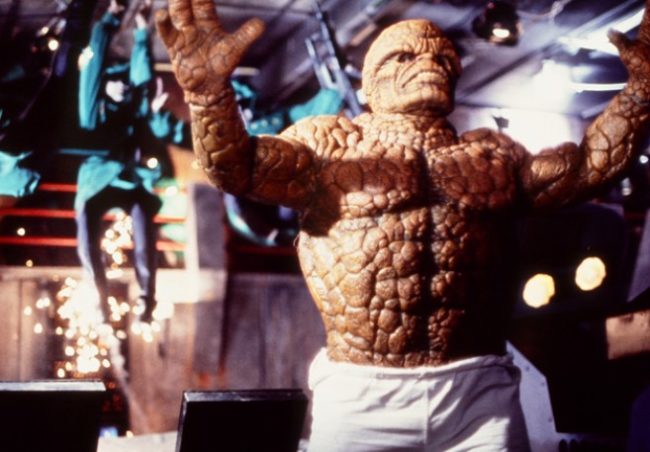
Plot: Four friends get bombarded with cosmic radiation on a space mission, develop shall we say fantastic super powers, and suddenly have the need to take down the nefarious Dr. Doom.
Why It’s Bad: Another movie that will be ruined by bad context. The story is something along the lines of the producer needing to make a Fantastic Four movie to hold onto the rights of the characters, so he hired Roger Corman to churn something out really fast, and they never even bothered releasing it. This is not helped by that cheesy 90’s TV visual quality, and special effects where The Thing has a rubber rock suit and Mr. Fantastic’s stretchy powers resemble something that requires a manual crank to propel his arm across the room.
Why It Is In Fact Good: The movie takes an earnest approach to the relationships of the characters, and manages to make them sympathetic. Compared to all those other mediocre FF movies, the simple approach of giving the characters time to deal with their issues on screen goes a long way. The struggle of Ben Grimm being an ugly rock guy and not knowing what to do with his life made him much more realistic and sympathetic. His leaving the FF manages to create a little suspense, even amidst the trite superhero cliches. And the smirking romance between Mr. Fantastic and the Invisible Woman borders being a little on the nose, but at least you also got to see the real love and affection they had for each other, not some distancing “we’re serious emotionless superheroes” crap (looking at you, Fantastic Four (2015)). And also, for any comic book fans or just fans of accessible action movies, nothing beats the charm of the Human Torch and Dr. Doom hurling cheesy one liners around. Simplicity is the key to a movie like this.
6. Myra Breckinridge (1970)
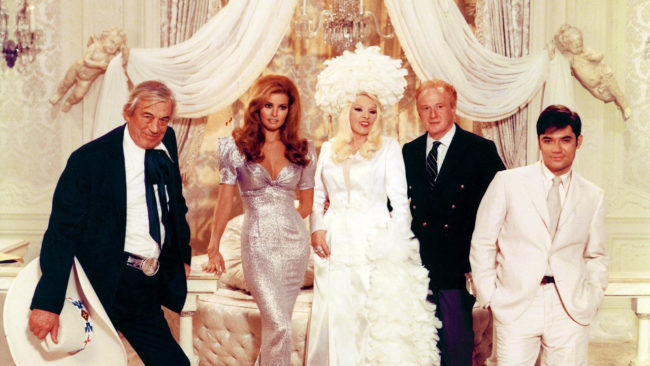
Plot: Myron Breckinridge gets a sex change operation and comes out of it looking like Raquel Welch: not a bad deal. The newly christened Myra seeks some financial compensation from an uncle of hers (John Huston).
Why It’s Bad: Like a lot of movies like these, it’s terribly uneven. While the beginning and the end are at least mildly distinctive, the middle seems more like a mishmash of ideas and gags than a real plot. The twist ending doesn’t help establish the full story as a fully fleshed out journey that was worth sitting through.
Why It Is In Fact Good: The movie as a whole is not an enriching story, but the gimmickry paired with the attempts at humor are interesting and ahead of their time. The movie employs a sort of self-referential use of old Hollywood clips and narration to create jokes and mix them with story, particularly when knowingly casting Hollywood vets like John Huston, John Carradine and Mae West in key roles along the way. It’s quite the novelty while being surprisingly engaging at times, and the movie really foreshadowed the more polished use of film clips in things like MST3K. There’s also a sort of poignancy to the story of a transgender woman fighting for her rights, a story that resonates with current issues, even if it only sort of addresses these concerns.
5. Reefer Madness (1936)
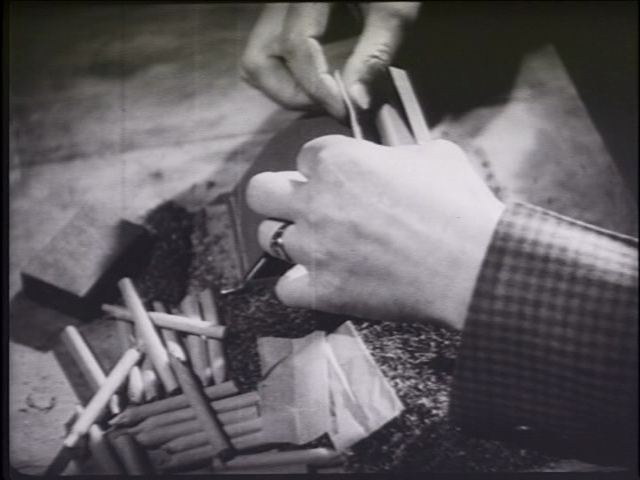
Plot: Some nefarious drug dealers expose a group of teenagers to marijuana (oh no), causing criminally insane behavior in their addled minds.
Why It’s Bad: Well, even for the most steadfast zealot of sobriety, the movie is loose with the facts about the effects of smoking pot, which doesn’t help with the story. Also, it’s a zero budget movie (practically a PSA), so there’s really no acting.
Why It Is In Fact Good: It’s funny to laugh at how wrong the symptoms of pot head-itis are, and how progressively cartoonish the kids get, the destructive power of something so baked (see what I did there?) into our culture. It almost reads like accidental satire. But also, on a more intellectual level, the movie is a narrative film, but it solely exists as a moral lesson about how the viewer shouldn’t smoke pot. So it’s really fascinating to see how this changes character and story to fit the message. The final scene, in which the last boy stands trial for his pot induced crimes, features a weird direct address to the viewer from the judge, and really speaks to how this film, surprising for such a crappy movie, actually sort of reinvents the cinematic wheel.
4. Showgirls (1995)
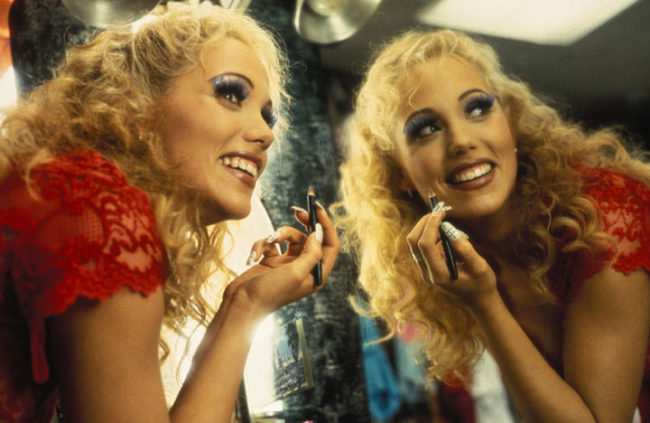
Plot: A young girl moves to Las Vegas and becomes enmeshed in the sexually charged and surprisingly cutthroat world of topless dancing.
Why It’s Bad: The plot is really uneven. It seems to flip back and forth from relishing its NC-17 rating and all the nudity and sex, and trying to actually do some dramatic arc work with Nomi (Elizabeth Berkeley), the cliched innocent girl from the sticks infected with city life. As a result, the end of the movie seems more tacked on than connected throughout. Kyle MacLachlan is in this movie as the boyfriend of Gina Gershon’s duplicitous show girl “bestie”, but both of them give uneven performances, mostly due to a lot of uninspired dialogue.
Why It Is In Fact Good: I think I liked this movie because it really tried to make a female driven story about success in a male system, even if it maintained that idea quite inconsistently. To see Elizabeth Berkley and Gina Gershon battle with each other for some perceived superiority, but in essence to dance around topless on stage for male amusement, really captured some kind of feminist-ish (I put the ish on there, no angry letters) critique of male indoctrination and limited access in a patriarchal system. On a lesser film studies degree level, there’s some real suspense on how far these women are willing to go for what they want, and who is going to hook up with Kyle MacLachlan (his character was underwritten, but he is still dreamy).
3. Mommie Dearest (1981)
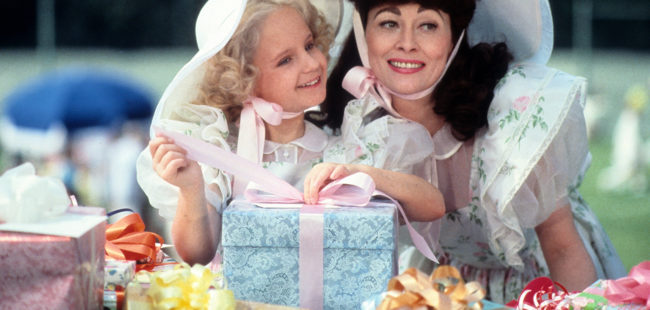
Plot: Based on her daughter Christina’s controversial memoir, Joan Crawford (Faye Dunaway) adopts two children so she can give her matronly love and warmth to them, or abuse them, whichever…
Why It’s Bad: Like in Troll (where else do you get comparisons like that?), having the co-star be an unknown child actor makes it hard to not be distracted from the story and be like “that’s a bad line reading”. And of course Faye Dunaway at times (not always, though) screams in a sort of forced way that takes the nuance out of the story and makes it seem like she’s a supervillain, not a struggling mother.
Why It Is In Fact Good: Before the facial masks, the “NO MORE WIRE HANGERS!” bit, and the beatings, there’s a prolonged section at the beginning where Joan is trying to get help from her lawyer boyfriend to get a baby for adoption when traditional means fall through. And Joan is actually a fairly developed character, a mix of positivity and worry, that builds honest sympathy. As the story gets goofier and goofier (I won’t spoil the ending, but Christina has the cheesiest final line of a drama in movie history), you sort of have to squint to see it, but there are some actual moments of Joan Crawford trying to regain her humanity, which grounds the story even as the goofiness buries it and seriously calls into question the real life Christina Crawford’s claims.
2. Elvira, Mistress Of The Dark (1988)
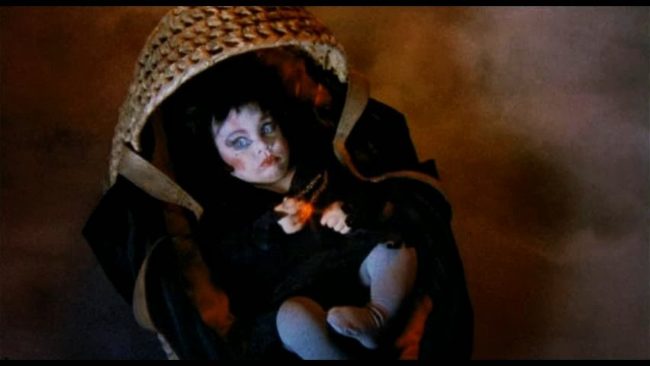
Plot: Elvira (Cassandra Peterson), a Vampirella looking type who talks like a Valley Girl and makes a lot of jokes, inherits a house in a conservative Salem, MA type place. While attempting to romance a local theater owner, she also inherits a poodle and, for plot purposes, a witch’s cookbook. Spooky.
Why It’s Bad: Elvira’s not the deepest character in film history, especially with her one note joke delivery, and there’s no real actors in this movie.
Why It Is In Fact Good: But the movie’s not really considered bad, in the classical “campy classic” sense. I put it on this list because the movie is the rare (and underrated) that’s able to consciously mix cheesy cinema tropes (in this case mostly horror) and comedic commentary in a fulfilling and good way. Elvira’s jokes are clever and sort of quippy, and the mix of 80’s culture with the Salem town create a distinctive juxtaposition that was funny to me at least. The combination of her sort of self-empowered sexuality (pursuing her man and not vice versa) and the conservatism of the town creates a sort of unique contemplation of feminine mobility vs. traditional values, and is easily one of the most unique heroines in moviedom. Plus, the pulpy storyline of evil warlocks and curses keeps it going.
1. Pink Flamingos (1972)
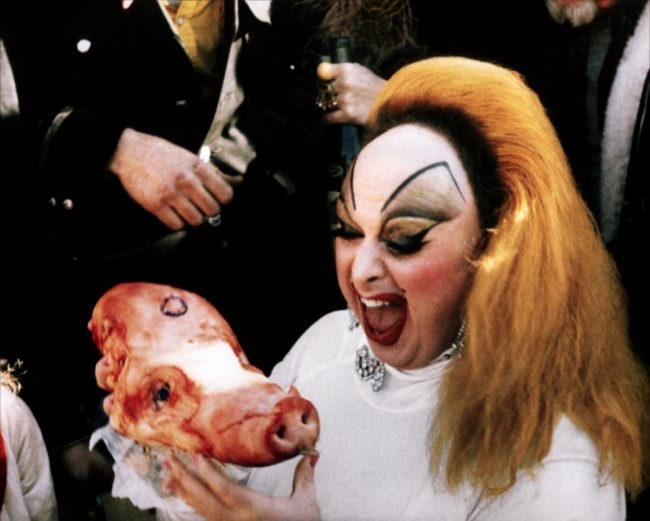
Plot: Babs Johnson (Divine) is challenged for her title of the “Filthiest Person Alive” by the filthy Connie and Raymond Marble.
Why It’s Bad: There’s some mild dialogue issues, like a self-aware Ed Wood, as characters openly discuss the plot, but what makes this divisive movie divide some people into the “this is terrible” category is clearly the filth. Everyone I talk to about this movie takes issue with how disgusting it is. Like the “final proof” of Divine’s filthiness at the end, and much earlier in the story when she fellates the actor playing her son, and there’s really too much awkward gross things to count. This movie is not for the overly sensitive. It’s weird, a little uneven in its plot flow, and it’s got a lot of non-actors in it who got by, better or worse, by being John Waters’ friends.
Why It Is In Fact Good: John Waters’ audio commentary (witty and charming enough to make you like this movie just with that) really opens your mind to the strength of imagination and the ability trust in your mental process that is so important. To paraphrase, John Waters happens to really like making films about sexual fetishes and serial killers, and to see how he could make a cinematic world out of that is oddly inspiring. Plus, Waters has a really sharp ear for comedy, with some surprisingly funny comic set-ups, even if his jokes often involve bodily functions. This movie is emblematic of the ability to push past the edges of a bland mainstream, to create a world where filthy murderous people are the heroes and to make it in a way that is fulfilling and awkwardly heartwarming.
